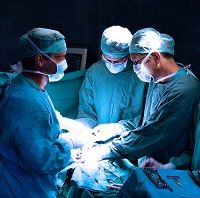Article
Post-Mastectomy Breast Reconstruction: Does Travel Distance Still Matter?
Author(s):
Travelling long distance for mastectomy patients still proves to be a significant hindrance for breast reconstruction.

Travelling long distance for mastectomy patients still proves to be a significant hindrance for breast reconstruction.
Evan Matros, MD, American Society of Plastic Surgeons (ASPS) Member Surgeon, and colleagues at Memorial Sloan Kettering Cancer Center, NY, NY, analyzed the relationship between travel distance and breast reconstruction in more than 1 million US women who underwent mastectomy from 1998 to 2011.
The team found the overall rate of immediate breast reconstruction approximately tripled from 10.6% to 32.2%. Matros and colleagues attributed this trend primarily to the Women’s Health and Cancer Rights Act (WHCRA) of 1998, which mandated insurance payer coverage of breast reconstruction following mastectomy.
Reconstruction was performed in nearly 14% of women who traveled zero to 20 miles for breast cancer treatment, compared with the approximately 25% of women who were forced to travel 100 to 200 miles.
The rates of reconstruction procedures varied by type of hospital:
· 10% of women were treated at community hospitals
· 20% of women were treated at comprehensive community hospitals, which provide a broader range of services
· 26% of women were treated at academic (university-affiliated) hospitals
Matros said, “While greater patient awareness and insurance coverage have contributed o greater breast reconstruction rates in the US, geographic barriers to access this service remain, particularly to academic centers.”
It was interesting to note that the average travel distance to the community hospitals was about 20 miles, while the mean distance to the academic hospitals was 47 miles.
Additionally, travel distance to high-volume hospitals that perform “autologous reconstruction” more than doubled from 22 to 53 miles — highlighting the concentration of specialized facilities in urban areas.
Matros commented, “The greater distance traveled by women undergoing breast reconstruction, as compared t mastectomy without reconstruction, suggests the presence of a geographic disparity.”
The findings suggested that measures providing insurance coverage — like the WHRCA and the Affordable Care Act – would not be sufficient to eliminate barriers to accessing breast reconstruction after mastectomy. The team concluded, "Greater numbers of plastic surgeons, especially in community [hospitals], would be one method of addressing this inequality."





